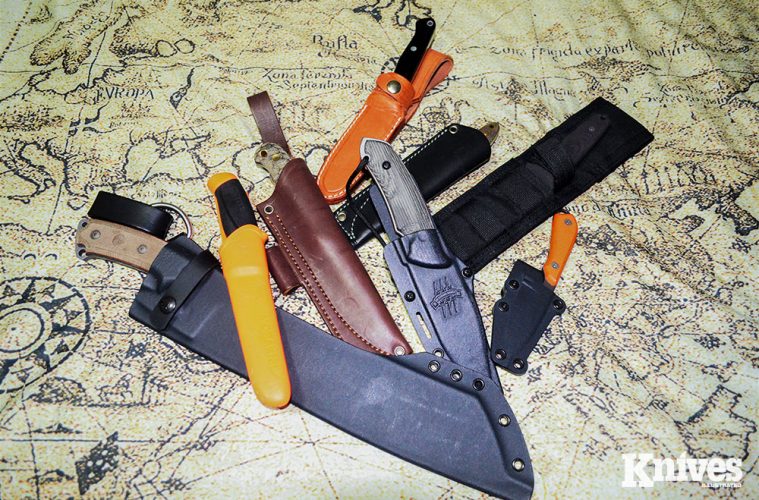EVER THOUGHT HOW WILL YOU CARRY THE NEXT KNIFE YOU BUY?
It is said that the best knife is the one you have with you when you need it. After all, if it is sitting in a case at home, it won’t be of much help when you’re two days into a five-day hiking trip. Yet, at the same time, when it comes to shopping for a knife, often we’re far more concerned with the blade steel and handle material than we are about how we’re actually going to carry it with us. While some models might incorporate more than one of them into the design, there are four materials that are typically used for knife sheaths.
“How you carry a knife is a personal decision and should be based on the type of knife you need as well as the type of work you’ll be performing.”
LEATHER KNIFE SHEATH
By far the most traditional of the options, it is also the one most likely to be decorated, if that’s something of interest to you. Whether gussied up or not, leather typically ages beautifully, with a little care. It is sturdy and can be repaired in the field with minimal supplies.
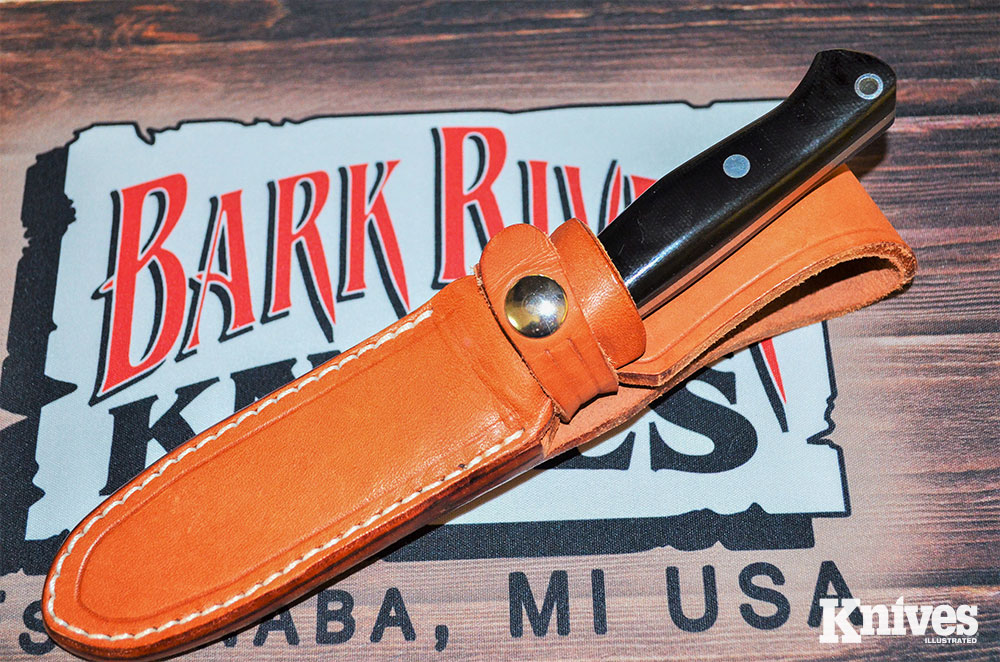
This is a fairly standard leather sheath with a retaining strap. It also features a large belt loop. Shown is a Fox River EXT-1 from Bark River Knives.
Most leather sheaths are either a pouch style, where the knife sits deep inside with just a few inches of handle exposed, or it will be equipped with some sort of strap that secures the handle, which is mostly or entirely exposed with just the blade itself resting inside the sheath.
There are a couple of downsides to leather. It retains moisture, which it can then hold against your knife, causing rust. If the leather isn’t treated properly, it will degrade over time, especially if exposed to moisture or sunlight for long periods of time. This can be mitigated by applying an aftermarket leather protection product.
KYDEX KNIFE SHEATH
This is a very popular option, particularly for those who prefer a more tactical look and feel to their sheaths. Kydex is an extremely durable thermoplastic that’s been used for knife sheaths for a several decades now.
It starts as a sheet that is then heated and formed. Quite often, when the knife is inserted into the sheath, it makes a distinctive clicking noise, assuring you that the knife is secure.
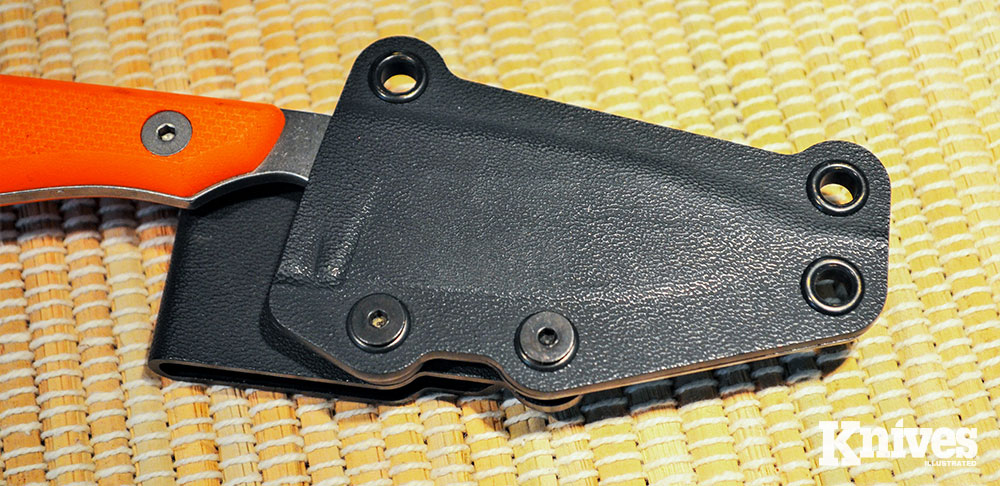
A simple Kydex sheath. Notice how the material is formed around the knife blade. Shown is an M1 from White River Knife & Tool.
Kydex is waterproof and requires virtually no maintenance other than wiping it clean from time to time. It is largely unaffected by temperatures typically experienced by most people.
Many Kydex sheaths will also have several attachment points, places where you can run some cordage through to tie the sheath to a pack strap or other location, if desired.
The biggest drawback is that these sheaths can dull the knife’s edge. Over time, pulling the knife out and pushing it back in, with the edge rubbing back and forth against the material, you may find you need to touch up the blade a little more often. If the fit isn’t exactly right, the blade may also end up scratched here or there by the sheath. For some, that’s a deal breaker and for others it might be no big deal.
PLASTIC KNIFE SHEATH
While the material is fairly similar to Kydex, this deserves a separate category due to the construction method. Where Kydex is formed around the knife, other plastic sheaths are injection molded and use a softer, more flexible material. It isn’t wimpy, not by any stretch, but it isn’t as bombproof as Kydex. They also aren’t as expensive to produce as Kydex sheaths, resulting in a lower overall price point.
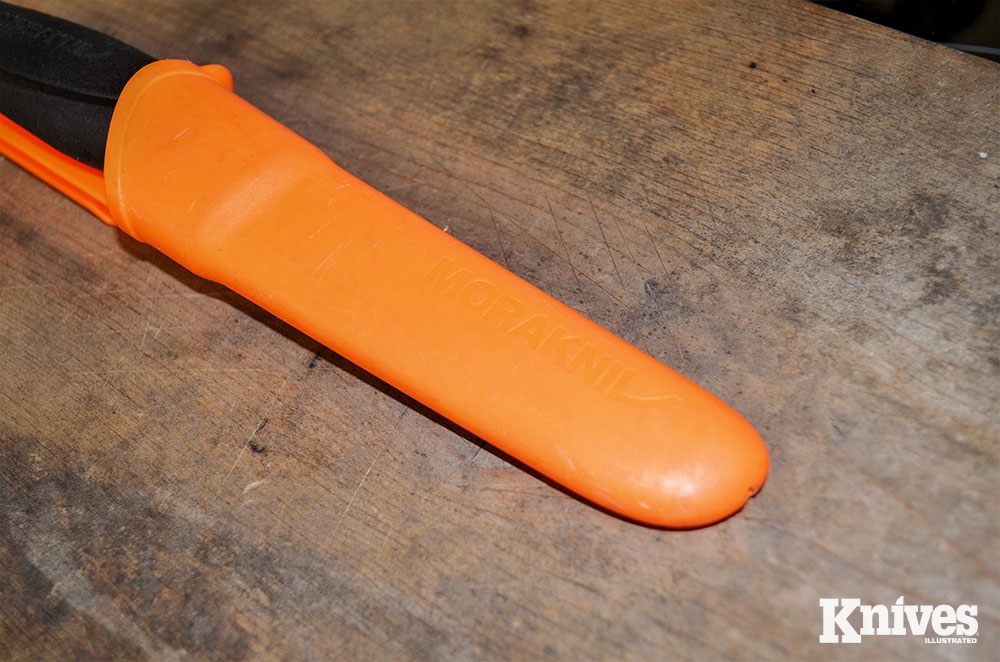
A Plastic sheath
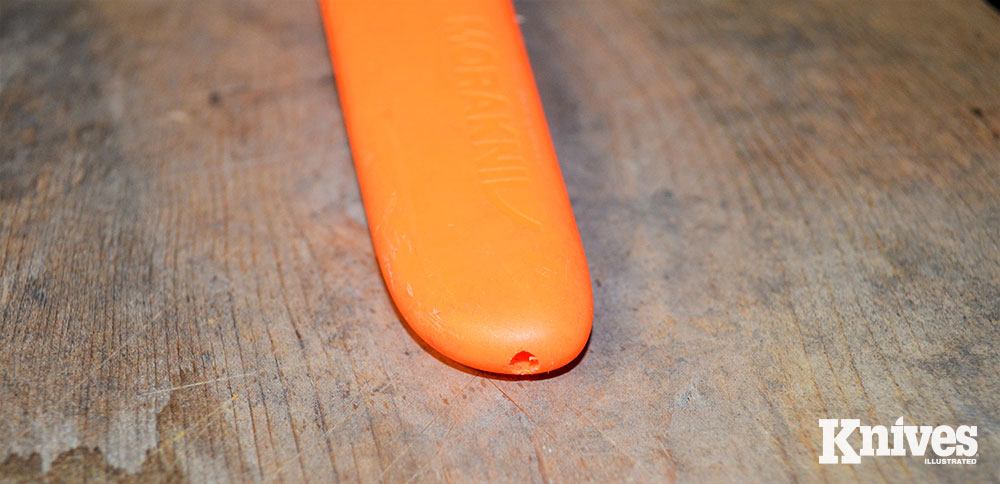
Plastic sheaths are generally plain and inexpensive. Some are equipped with a drain hole (inset, right), to release condensation and moisture. Shown in both photos is a Companion from Morakniv.
Being plastic, the sheaths are waterproof. Many of them are equipped with drain holes at the bottom to release condensation or moisture that might be present on the knife. They are durable, but can be negatively affected by long-term exposure to UV radiation.
NYLON KNIFE SHEATH
This one sometimes gets a bad rap, but it is definitely a workable option. Nylon is plastic that has been formed into threads that are woven into a fabric-like material. It is strong and weather-resistant, making it a good option for outdoor gear like knife sheaths.
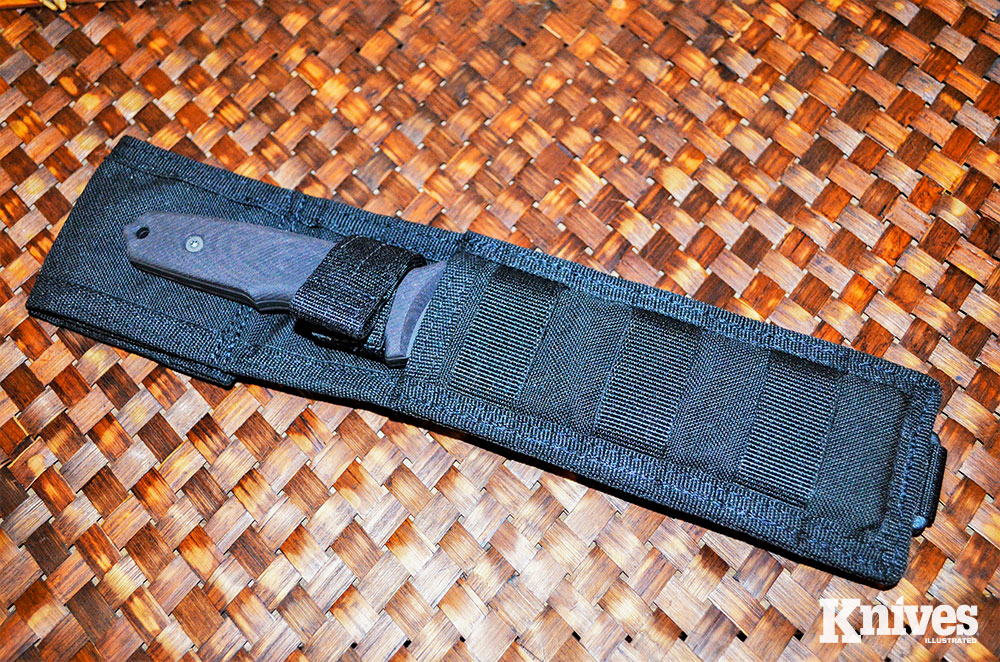
The black nylon sheath here is subdued, but durable. Shown is a Harsey Tactical Trout from Spartan Blades.
It is also relatively inexpensive compared to leather while offering similar qualities of flexibility and durability, albeit with a more tactical look. However, it can fray if the knife’s edge nicks it. But, many nylon sheaths include a hard plastic insert to prevent that from happening.
FIXED BLADE CARRY OPTIONS
The style of sheath will typically dictate the carry options available. Naturally, you can contract with a custom maker who can craft the perfect design for your wants and needs. But if you’re looking to limit your expense, then take the stock sheath into consideration when making the initial purchase.
By far, the most common way to carry a knife is on the waist with the tip pointed down. Worn with the knife over the hip, the blade remains within easy reach. Depending on the knife size, some may prefer a sheath that keeps the end of the handle near the beltline for comfort.
You can go a step further and incorporate a dangler, which drops the knife down to the thigh. This is particularly good when carrying a larger knife, though it can bounce around a bit as you move.
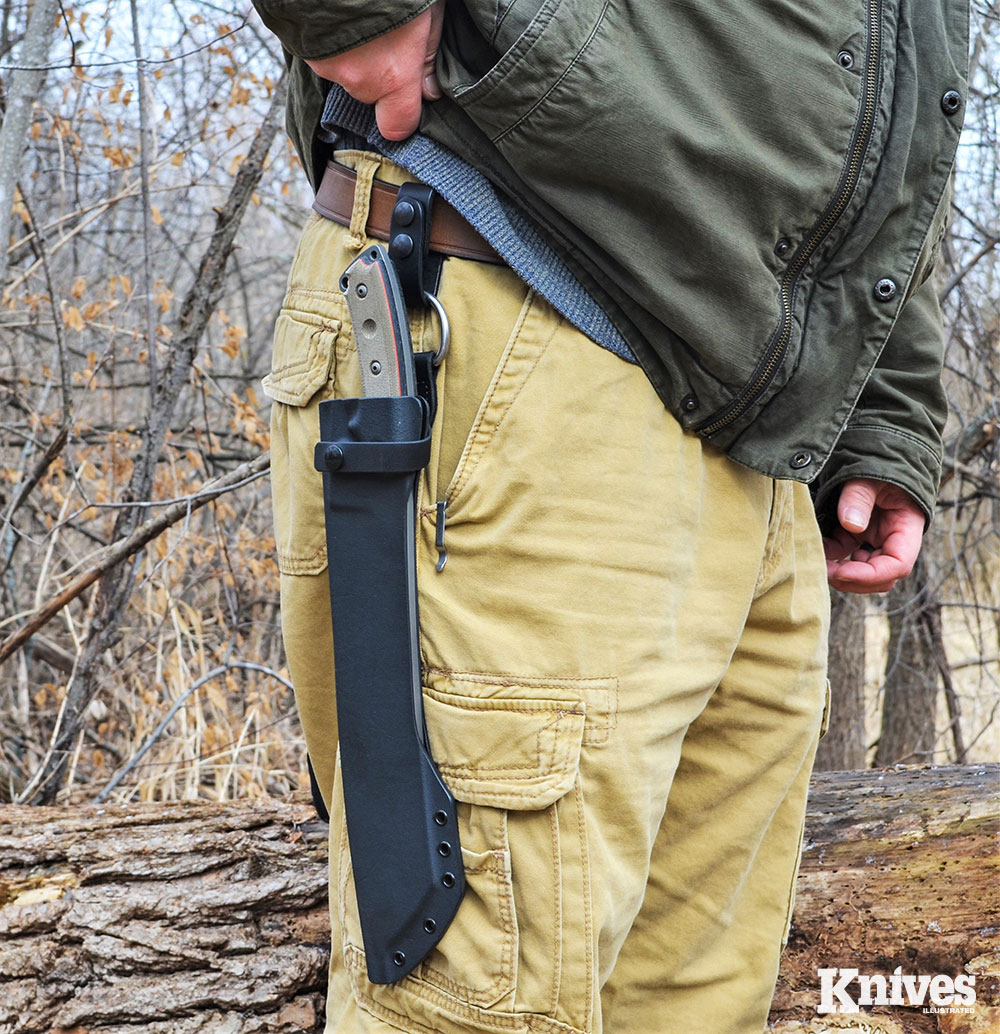
A dangler works great for large blades, keeping them accessible but not uncomfortable. Shown is an El Chete from TOPS Knives.
Often called scout carry, having the knife stored horizontally on the belt, usually at the small of the back, is excellent for concealment. It should go without saying that the sheath must be exceptionally secure or you might lose the knife without even realizing it. There is also a bit of a learning curve to replacing the knife in the sheath properly.
Neck sheaths work well for freeing up space on your belt, though they are best for smaller knives. Some may find them distracting, due to their movement as you walk. Keeping the knife under your shirt will reduce this tendency, but that can also expose the knife or sheath to your sweat. If you go with this sort of carry, some suggest using a breakaway cord so you don’t accidentally strangle yourself in an accident.
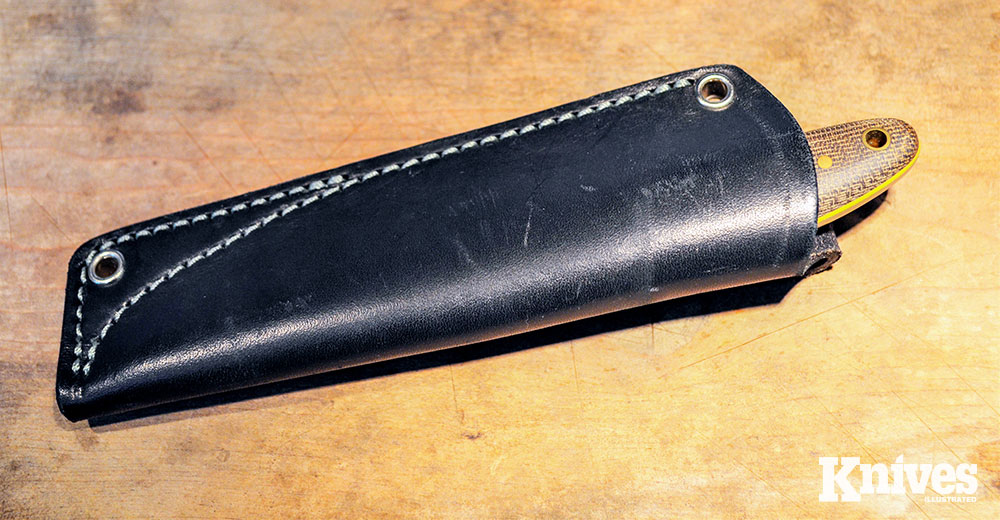
This basic pouch style leather sheath keeps the knife secure but riding low on the belt line. Shown is a Lapwing from Nordsmith Knives.
If you’re planning to spend a considerable amount of time hiking each day, keeping the knife on a pack strap might be a workable option. It keeps the knife within easy reach without weighing down your belt. However, it also means that if you set the pack down and walk away, you’re leaving your knife behind, which isn’t ideal.
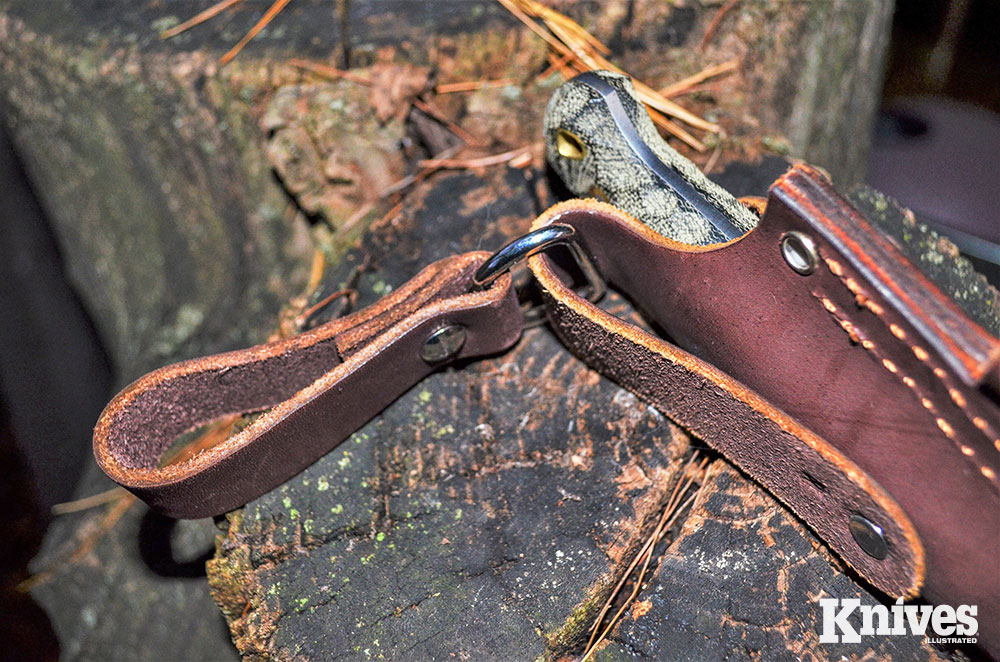
Some sheaths are equipped with a removeable dangler, giving you the option of carrying the knife directly on the belt or not. Shown is a GNS from LT Wright Handcrafted Knives.
If the fixed blade knife is small enough for pocket carry, consider a static line option. This is where you basically tie the sheath to your belt with a length of cordage. It should be long enough to allow the sheath to rest comfortably in your pocket.
But, when you need to deploy the knife, you just pull the handle from your pocket with a bit of force. When the cordage gets taut, it holds the sheath secure as the knife slips free. The sheath will then dangle at the end of the cord until you replace it in your pocket.
FOLDING KNIFE CARRY OPTIONS
They’re called pocketknives for a reason, right? Most folding knives are carried in a pants pocket. However, even there we have a few options to consider.
The most common carry feature on folding knives these days is a pocket clip. They come in two basic styles—regular and deep carry. A regular style clip secures the knife to the pocket.
But, the knife is somewhat visible, sticking up a half-inch or so from the top of the pocket material. A deep-carry clip keeps the knife farther into the pocket, so it is hardly noticeable. While in both cases the clip itself is obviously exposed to view, they are usually dark-colored, which works well unless you’re wearing khaki pants.
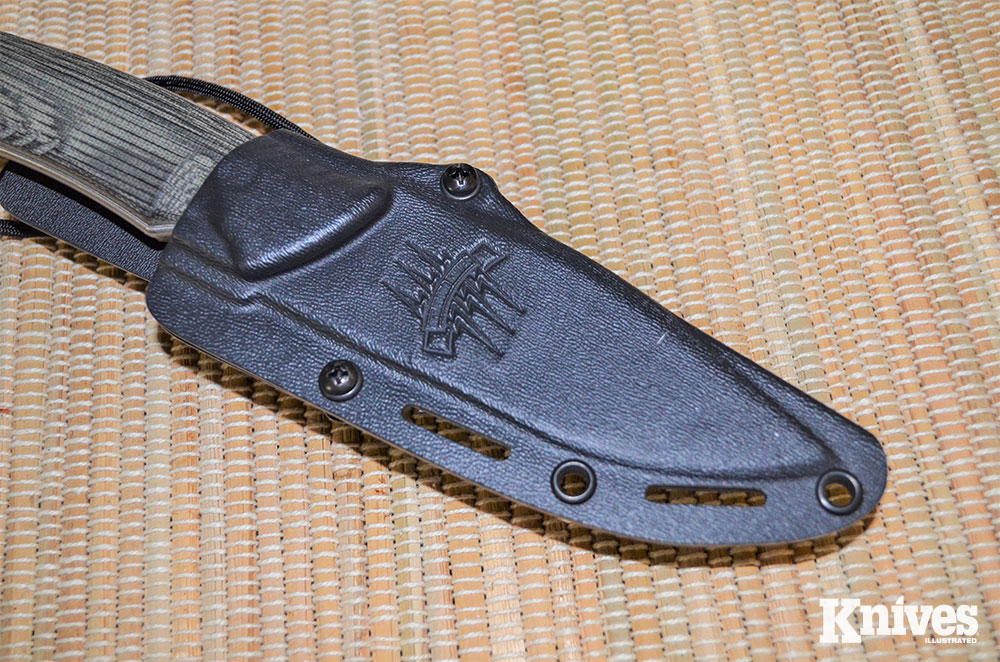
While most Kydex sheaths are plain, some makers will add a stamp or similar decorative marks. Shown is the Attleboro from Attleboro Knives.
There is also what’s called a mini deep-carry clip, which shortens the clip itself to about half the length of a standard one. This helps with the concealment factor. With some knives, the pocket clip position can be changed, so you can choose between tip-up or tip-down as well as right- or left-hand carry.
“A carry system that’s awkward or uncomfortable will just end up being left at home, meaning you won’t have the knife with you when you need it.”
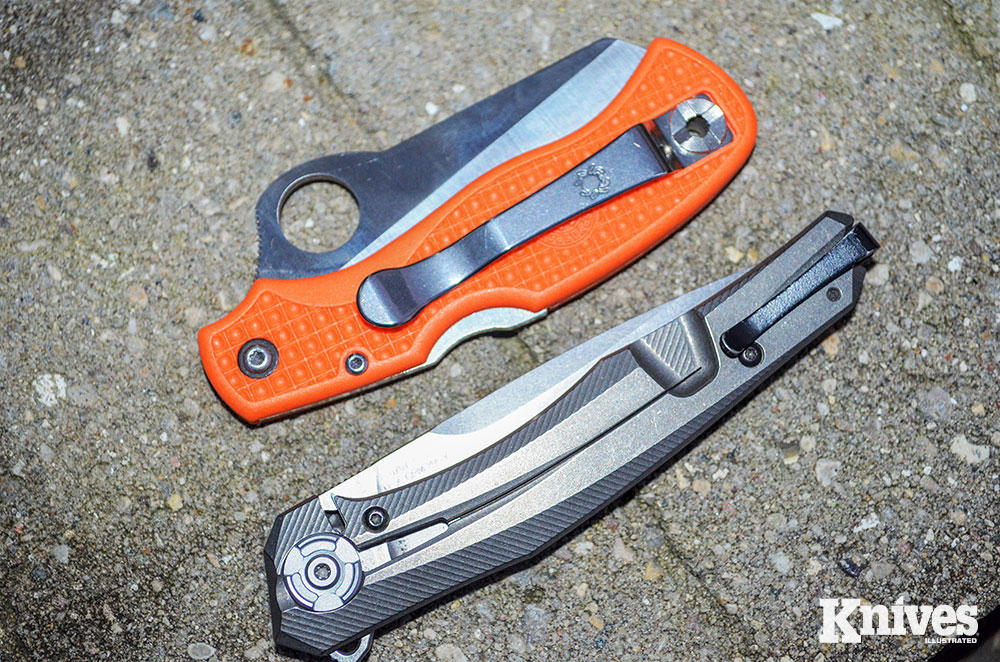
Here’s the difference between a standard pocket clip (shown on a Rescue 79 mm from Spyderco, top) and a deep-carry clip (on a ZT 0707 from Zero Tolerance Knives, bottom).
Some folding knives, such as the classic Buck 110, come complete with a belt pouch. This works particularly well if you use your folding knife a lot throughout the day, saving you from digging through your pocket all the time.
There are also slip-styled sheaths in both leather or Kydex for folders on the market. However, with all of these, it is a visible carry and thus might be frowned upon in some locales.
Of course, many folding knives are unadorned with pocket clips and are just tossed into the pocket, such as the classic Swiss Army Knife. Smaller ones might be attached to keychains, but using such a knife for anything beyond slicing open a box can get awkward if you have more than a couple of keys with it.
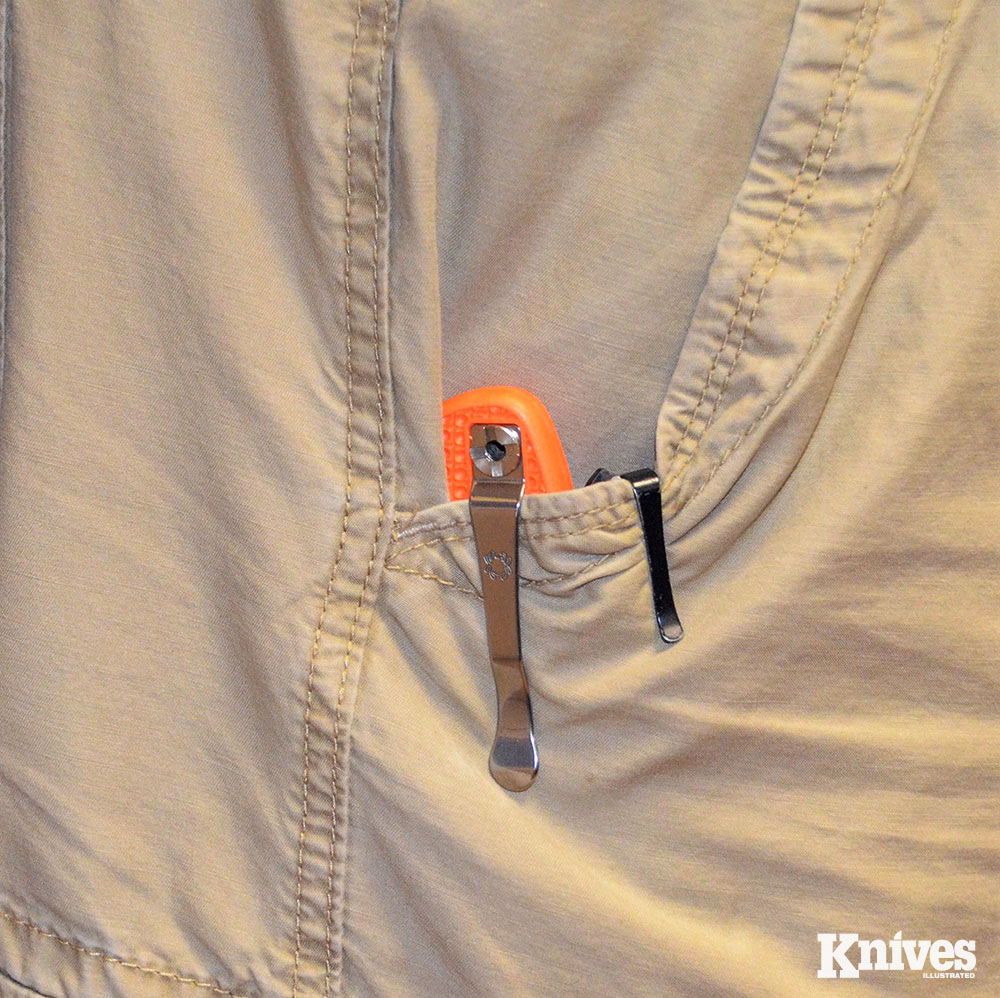
Notice the difference between the same standard pocket clip (Rescue 79 mm from Spyderco on left) and the deep-carry one (ZT 0707 from Zero Tolerance Knives on right) when attached on the pocket. Tammy Cobb photo.
How you carry a knife is a personal decision and should be based on the type of knife you need as well as the type of work you’ll be performing. A knife carried primarily for defense might dictate a more concealable option compared to a knife that’s going to be used all day long for various chores.
Above all, though, it should be comfortable. A carry system that’s awkward or uncomfortable will just end up being left at home, meaning you won’t have the knife with you when you need it.
LANYARDS
When you get right down to it, there are two types of lanyards: those that are functional and those that are strictly decorative. The latter might feature beads, some of which can be truly beautiful and intricately designed, or other adornments.
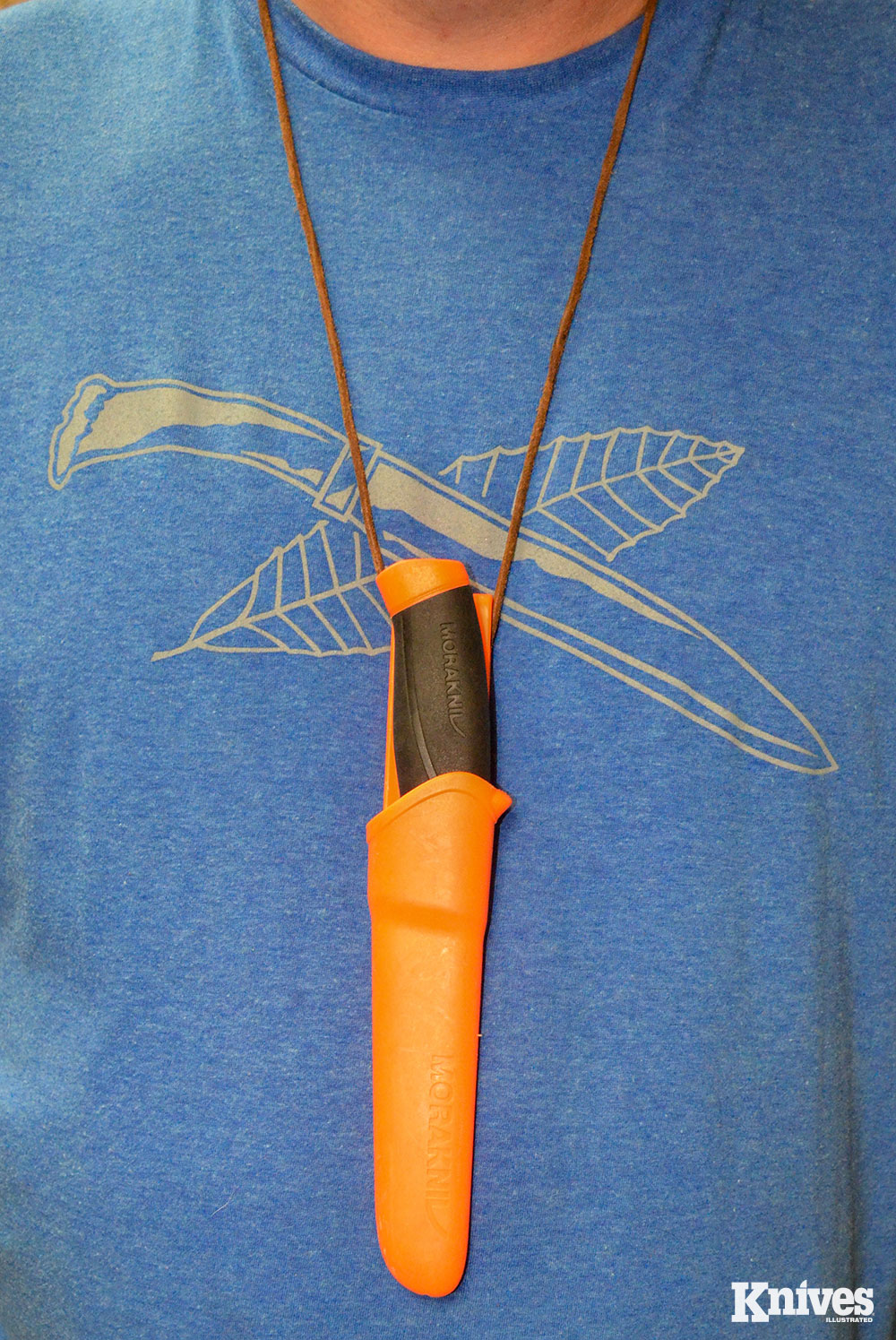
Carrying a knife on a lanyard around your neck will keep it within easy reach, but be wary of choke hazards. Shown is a Companion by Morakniv. Tammy Cobb photo.
A functional lanyard is typically a loop that is large enough to fit around the hand. It is used to increase retention of the knife, preventing it from falling if your grip loosens, that sort of thing. However, I’ll share a word of caution with you, something I learned from a retired British Intelligence officer years ago.
If you’re using a knife for defense, don’t loop the lanyard around your wrist. What can happen is that if you’re able to cut or stab your attacker, they will naturally turn away from the knife. If the blade is caught by their body or clothing, the lanyard around your wrist will pull you along with them.
The other type of functional lanyard is a woven strand, rather than a loop. These are sometimes used on smaller knives to give you a little extra purchase for your grip when you hold the knife. This style of lanyard is also occasionally used to assist in removing a knife from your pocket, though this is far more often for a folding knife than a fixed blade.
A version of this article first appeared in the Jan/Feb 2022 print issue of Knives Illustrated.

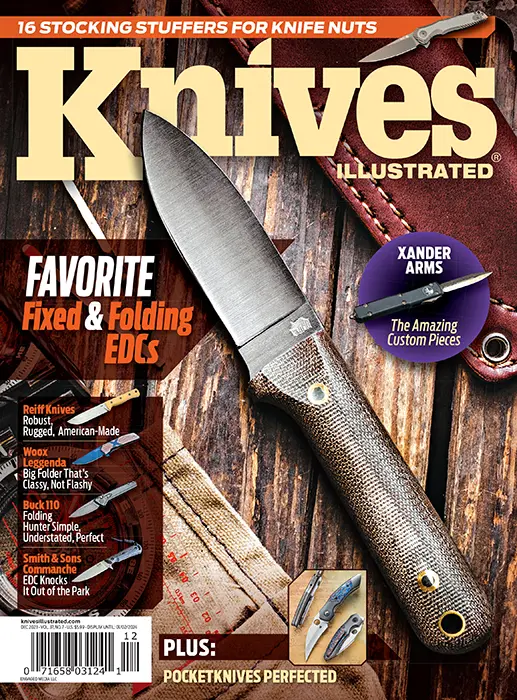 Subscribe / Back Issues
Subscribe / Back Issues